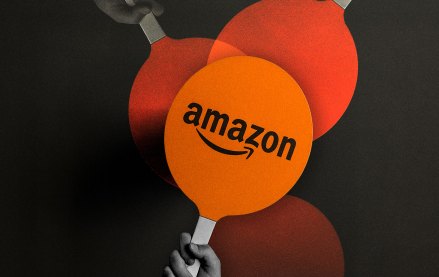Join us Dec. 1-3 in New Orleans for the Digiday Programmatic Marketing Summit
Media Buying Briefing: Retail media has become a full-funnel play for media agencies

This Media Buying Briefing covers the latest in agency news and media buying for Digiday+ members and is distributed over email every Monday at 10 a.m. ET. More from the series →
The sooner the marketing ecosystem accepts that any marketer who generates data from sales is most likely going to monetize that data by launching a retail media offering, the sooner the media agency world can wrap its arms around how to use it properly.
For the most part, the holding companies have stepped up their resource-building around retail media and the broader catch-all of commerce media — although there’s a lack of standardization around the terminology used in the space. So have many larger independents, and there are even smaller agencies devoted to the practice of commerce media.
As they’ve learned the ins and outs of retail media, media agencies are also starting to understand its value as a full-funnel means of marketing for their clients, where once retail media and its ancestor shopper marketing were seen as lower-funnel, performance-driven tactics.
“We’re taking more of this total commerce approach, and in that it does require us to think about everything from awareness to acquisition to advocacy,” said Sammy Rubin, vp of integrated media at Wpromote. “But it’s not just investing in retail media networks that will get us there. … We’re taking the infrastructure that we built around driving DTC and applying that to retail so we can now really service our clients and also address this growing need in the marketplace around these siloed organizational teams, siloed budgets, siloed objectives, and really usher in integration.”
It’s no surprise that retail media networks are encouraging this type of thinking as they connect to a broader array of data sources, said Jon Flugstad, head of business development, commerce media, at Moloco.
“The idea of being full funnel is on a lot of minds of retail media networks,” said Flugstad. “This idea that I have sort of the channels in my purview that can achieve a broad swath of objectives for my advertisers. It’s not just about performance anymore. A brand might think of optimizing for reach for certain campaigns, or optimizing for other kinds of elements that are part of a tentpole event, for example. Am I launching a product? Is it back to school? So how do I meet their needs in a way as a full media offering.”
The RMNs are even taking their messages straight to the media agency world. Michelle Weiskittel, head of media and strategy at Albertsons Media Collective, one of the faster-growing retail media networks to come online in the last few years, said she and the broader team met with all the major holdcos during Cannes Lions.
“We met with top holdcos to make sure that we’re thinking about our solutions with a customer-first approach, and the customer in this case being the agencies, but also who they’re buying on behalf of,” said Weiskittel, who’s worked on both the RMN and agency sides of the business over the course of her career.
That news comes as some relief to the media agency world, since in the earlier days of the pandemic as e-commerce was exploding with people stuck at home, it looked like the retail media networks could possibly work around agencies and go directly to marketers (the former of which already had relationships with the retailers to get shelf space in stores).
“You’re seeing all the brands — followed by the agencies — saying we have to rethink this notion of brand and performance,” said George Musi, chief business officer at Night Market, Horizon Media’s commerce and retail specialty operation.
Musi said he sees the layout of opportunity within the broader commerce media space as a matter of understanding the horizontal in order to invest in the vertical. The horizontal, he explained, is every channel that touches the commerce media world: retail media, shopper, in store, in app, on site and even off site. The vertical is essentially reach-related: national, regional, local or even hyper-local.
“We think horizontal is critically important to get a through-the-line understanding of all those channels that had [previously] been thought about in the world of shopper marketing,” said Musi. “It’s been proven out many, many times that you can just work in that environment, and do full funnel. What that doesn’t enable you to do is give you the massive scale of national budgets, or even regional budgets, where you can now bring massive reach, massive awareness, massive messaging, to basically incite people to do things, and then continue that conversation wherever they are — at home, in Starbucks, watching connected TV or through social commerce.”
It’s one reason Weiskittel said Albertsons is connecting its data and insights on consumer behavior with the likes of connected TV and streaming (Albertsons calls it Collective TV) through a raft of partnerships with major DSPs, ratings firms and other ad-tech that works in the CTV space.
“With our approach to streaming and video, there’s the flexibility and a model to fit into a shoppable solution that may be more merch aligned, that then we may take through this sort of more white glove managed service type of offering,” she said. “But just because retail media networks are able to help with better addressability and measurement, it may become a different type of buy where agencies would lean in for a different type of higher-funnel objective.”
To Patrick Miller, co-founder of Flywheel, which Omnicom purchased last year, it’s a matter of balancing probabilistic with deterministic goals, and the insights that retail media — he hates the term and instead calls them closed-loop systems — can bring to the task at hand.
“What’s fundamentally changed is that consumer brands, who have always sold through retailers, have never had the ability to deterministically see the output of their media investment,” explained Miller. “Within a closed-loop system, now you can start to say, ‘Hey, I put a nickel into the machine and did it spit out a dime?’ That is a very simple task when the brand only sells in one retailer. It becomes a very complicated task [with] the more platforms in which the brand advertises or earns media. And so it is an abridging exercise between determinism and probabilism to figure out how do I create a construct to give proper attribution to where I am making my investments and the other levers I end up pulling.”
Color by numbers
Everybody ready for Prime Day this week, aka a day of guilt-free shopping for things you didn’t know you needed? Insider Intelligence shared the latest on Amazon’s retail dominance — and it’s no surprise that the tech giant is leading with 40% of the U.S. market share in e-commerce sales, with Walmart in second place. — Antoinette Siu
More stats:
- In 2024, the number of Amazon Prime households globally is expected to increase 10% from last year to 317.8 million. In the U.S., that will increase 2.9% to 97.2 million households.
- Global Amazon Prime Day sales are forecast to grow 6.2% to total $13.33 billion. For the U.S., sales will grow 5.5% to reach $8.18 billion.
- Total U.S. e-commerce sales on Prime Day (including both Amazon and its competitors) will rise 5.9% this year to $13.80 billion.
- Amazon’s e-commerce sales in 2024 will total $491.65 billion, up 10.5% from 2023.
Takeoff & landing
- Publicis won CPG advertiser Hershey’s U.S. media business, and is forming a unit dedicated to serving the client, called MiltonOne. The $300 million estimated media spend moves from incumbent Horizon Media.
- Stagwell’s opinion polling group The Harris Poll acquired predictive brand tech firm BERA, which will be folded into its Harris Quest suite that conducts market research and brand tracking.
- Personnel news: Horizon Media’s commerce unit Night Market hired Dr. Ram Singh to be its chief data officer, overseeing the unit’s analytics efforts. Singh comes from Crossmedia, where he was chief performance media officer … InfoSum promoted Lauren Wetzel up from COO to be its new CEO, replacing Brian Lesser, who is moving on in a planned transition.
Direct quote
“When we first started working on the privacy law, what got me going was the transfer of wealth to online advertising. I don’t think people really quite understood how much the television, newsprint, radio, video, magazine, the entire advertising revenue shift went online.”
— Sen. Maria Cantwell (D.-Wash.), at a Senate Commerce Committee meeting on AI and privacy last week.
Speed reading
- Antoinette Siu looked at how media agencies, facing competition from consultancies, are expanding their arsenals with finance-based marketing and business intelligence for clients.
- Alexander Lee examined how brands are getting more comfortable involving creators and influencers into their gaming sponsorships.
- As cookies take their sweet time getting sunsetted, I took a look at one alternative ID solution out of IntentIQ and the results it got from a test run with a media agency.
More in Media Buying

WTF is commerce media?
In the decade-plus since Amazon started selling ads based on people’s purchase histories, retail media has ballooned into a $59 billion business in the U.S., according to eMarketer.

How Amazon aims to do more with less
Amazon’s campaign manager overhaul is designed to fix what advertisers disliked most about its DSP.

Media Buying Briefing: Q4 wobbles a bit, and buyers wonder how it will affect 2026 spending
Mixed signals are coming out of the Q4 ad marketplace — some buyers report a recent drop-off in ad spend from a number of categories, while others say alarms aren’t yet ringing for 2026.








